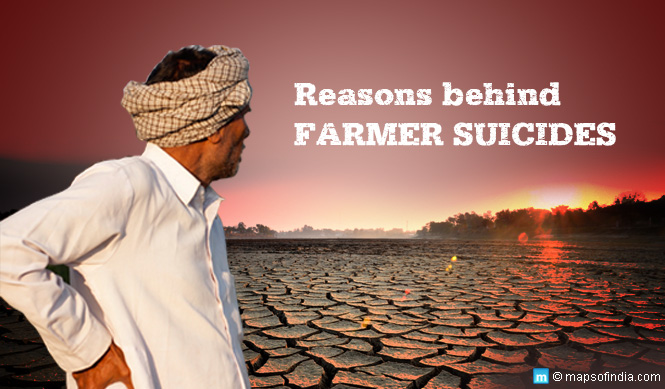About Image: Indian Farmers are Committing Suicide because of Monsanto’s costly GMO Crops, Heavy rains, low wages, high debt, and government destruction of farmland all add up to an increasingly desperate situation for Indian farmers.
Why are Indian farmers killing themselves? Farmers Suicides In India

